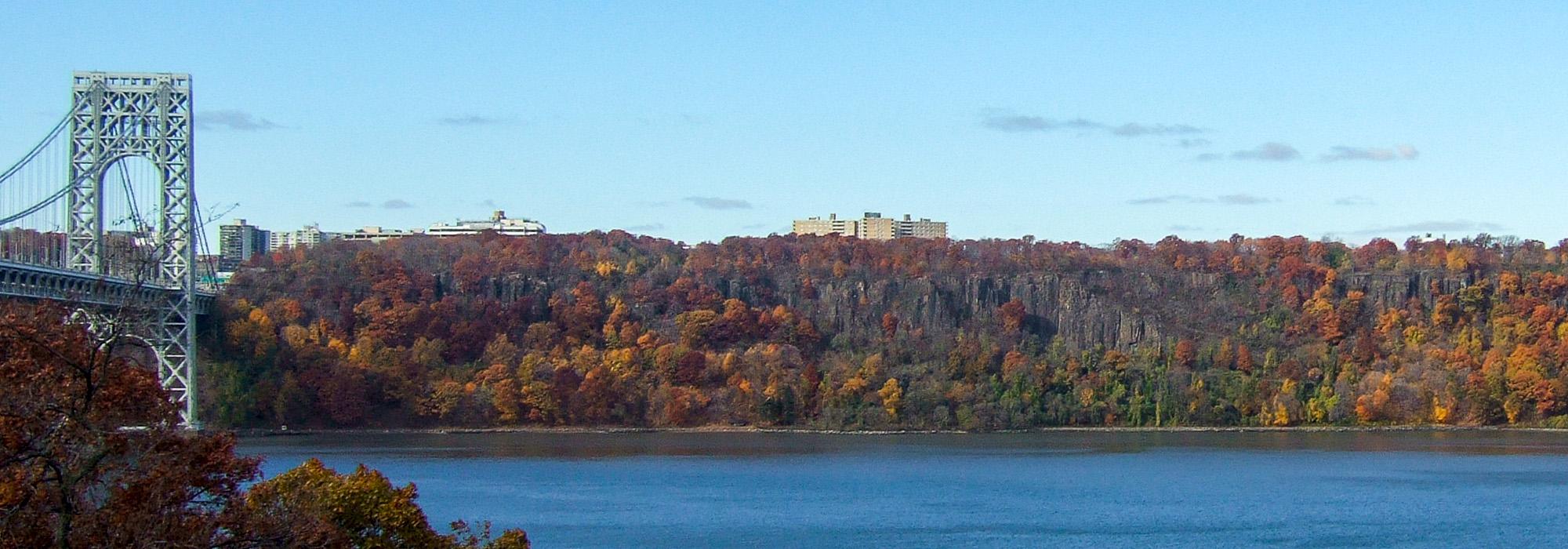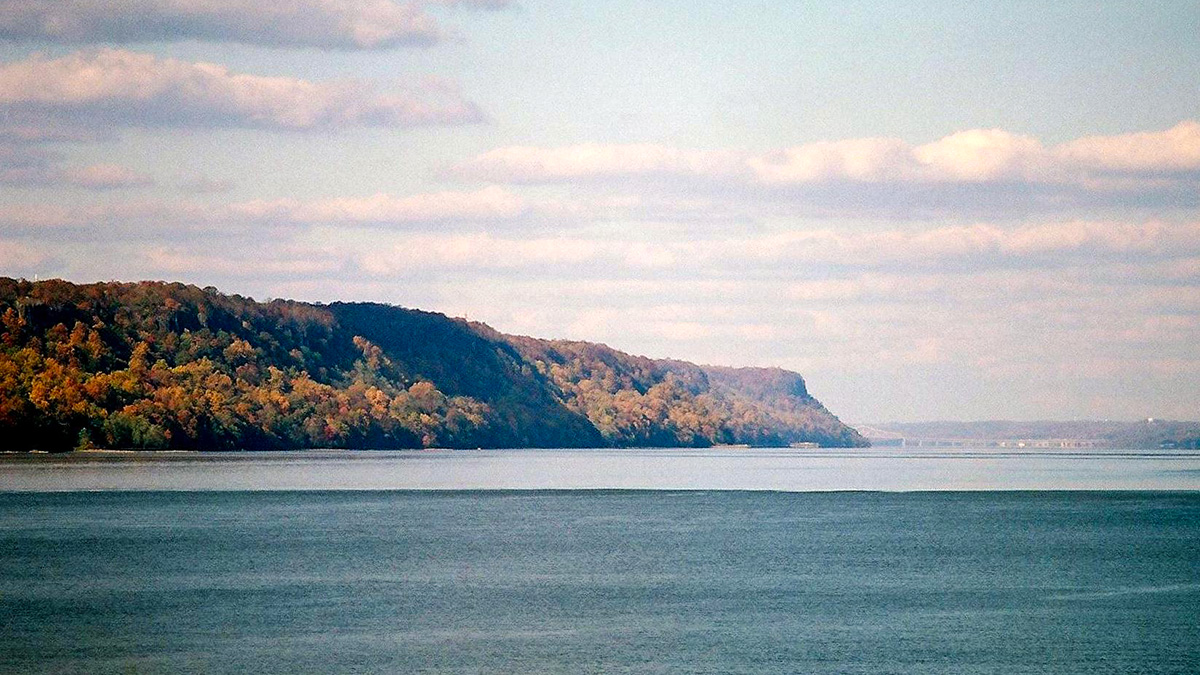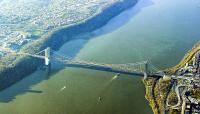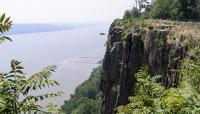Landscape Information
Located in Bergen County, New Jersey, and Rockland County, New York, these cliffs follow the western shore of the Hudson River for about 40 miles, from the Rahway River in New Jersey to Haverstraw, New York. Named for their vertical columns of volcanic rock resembling a stockade fence (or palisade) from a distance, their highest point is South Mountain’s 797-foot-high High Tor peak, in High Tor State Park in Clarkstown, New York. The cliffs were mined for gravel and building materials through the 1890s, until the two states formed the Palisades Interstate Park Commission (PIPC) in 1900 for the purposes of preserving the cliffs. Since that time, significant land donations have been made. The New Jersey portion of the cliffs is maintained by the Palisades Interstate Park – NJ Section. There being no comparable New York section, the PIPC administers a system of eleven separate state parks along the New York Palisades, including High Tor State Park. On the Palisades in Tenafly and Alpine, New Jersey, is the Greenbrook Sanctuary, a 165-acre woodland preserve largely consisting of oak forest, particularly along the cliff edge, which features an abundance of red oaks, black birch, and hickory. The original design for Palisades Interstate Park was completed by Charles Leavitt, Jr., who also served as its chief engineer for twelve years beginning in 1901. In 1903 he proposed a long drive extending from Fort Lee, New Jersey, to Piermont, New York. Although the drive’s construction was long delayed, Leavitt’s proposal laid the foundation for the 1958 Palisades Interstate Parkway, which runs along the western edge of the New Jersey section of the park. Palisades Interstate Park was listed in the National Register of Historic Places in 1966, and the Palisades designated a National Natural Landmark in 1983.












